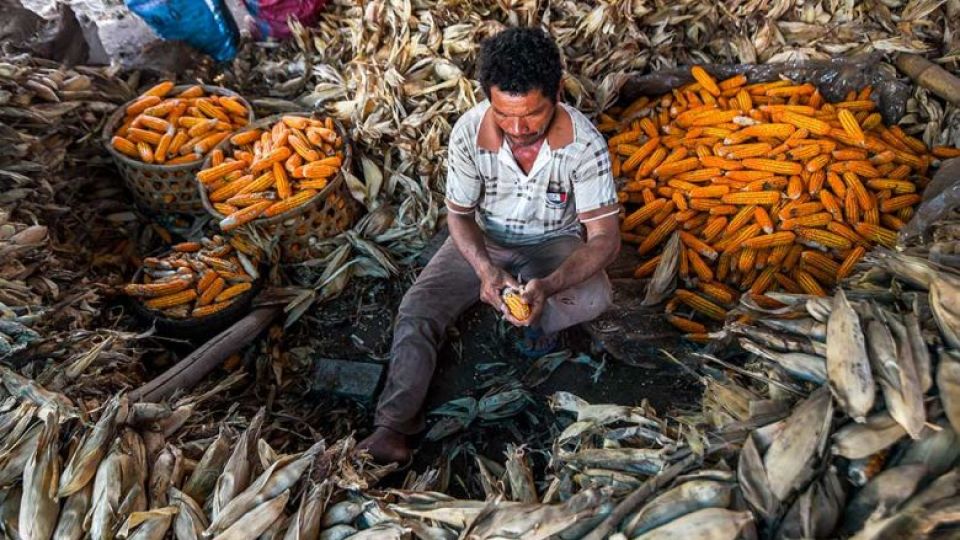July 6, 2022
PHNOM PENH – The prices of red corn have risen significantly in provinces along the Thai border as the year’s first harvest season kicks off, while Chinese investors look into exporting the pumpkin-hued cultivar to China, according to the top Battambang provincial commerce official.
Typically processed as animal feed, red corn is harvested twice a year: once between late June and August, and again from late October to February of the following year.
Battambang provincial Department of Commerce director Kim Hout told The Post that traders were buying fresh red corn on the cob from growers at an average of 730 riel ($0.18) per kilogramme on July 7, as the harvest reached about 30 per cent completion.
For comparison, Hout had cited 700 riel on July 26, 2021, which he mentioned had been up by 150 riel year-on-year.
He said that about 80 per cent of the red corn grown in Battambang is exported to Thailand, while the rest is bought by local companies to grind into animal feed. But that may change, Hout said, sharing that Chinese investors have recently been visiting plantations to explore the possibility of exporting the crop to China.
“I’ve met with a few companies from China that are planning to buy red corn from Cambodia in bulk, but there are still a number of problems, such as the relatively long distance to the port [in Preah Sihanouk] which will result in higher transportation costs,” he added.
According to Hout, the persistent rise in prices has prompted a considerable increase in the area under red corn cultivation, which the provincial agriculture department puts at more than 81.5 per cent year-on-year.
Banteay Meanchey provincial Department of Commerce director Bouk Laychy said that, depending on humidity levels, per-kilogramme prices of fresh red corn on the cob from the northwestern province’s growers fall in the 680-740 riel range, up from 450-510 riel on a yearly basis.
On the other hand, the area in Banteay Meanchey under red corn cultivation remains on par with last year’s level of about 10,000ha, he said, adding that the grains grown in the province are usually resold in Battambang or exported to Thailand.
With insufficient silos in Banteay Meanchey, and as the first harvest falls during the rainy season, red corn in the province is mainly sold on the cob, he said, adding that rising prices for fertilisers this year were hampering production of the grains.
Chan Muoy, the owner of a silo in Battambang province’s northwesternmost Sampov Loun district, said that although current yields are generally higher on-year, per-kilogramme prices of red corn in the area have jumped up to 680-740 riel on the cob and 1,300 for dried kernels, up from 510-570 riel and 810-1,030 riel a year ago, respectively.
Although she reflected on the unprecedented nature of the price increase, Muoy cautioned that “things may change because the harvest merely started just over a week ago”, she said.
Meanwhile, Battambang provincial Department of Agriculture director Chhim Vachira insisted that the harvest was more like 10 per cent complete.
Although yields have by and large been better than last year, Vachira revealed that worms had made a notable dent in the harvest, but assured that his team pushes to avail markets for farmers and regularly visits plantations to promote planting techniques among growers and provide high-quality resilient seeds, to ensure that incomes improve each year.
The area under red corn cultivation in Battambang for the first 2022 harvest is 55,183ha, up from 30,397ha in the same period last year, according to the provincial agriculture department.
To this effect, Vachira remarked that the areas under red corn and cassava cultivation change every year.
“When the prices of red corn are high, people look to grow red corn, and when the prices of cassava are high, they grow cassava.”


